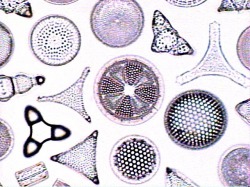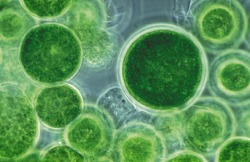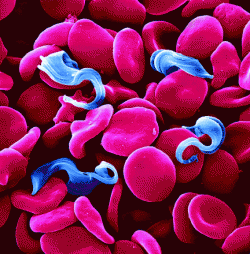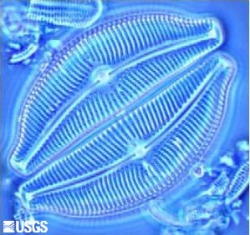More types of Protista:
Euglenas:
Euglenas are unicellular protists that can be considered to have both plant and animal-like features. An euglena can eat food like animals do and make food like plants do. Euglenas can surround a partical of food and then eat it. Euglenas live in salt water, fresh water, and marine-like environments. Many euglenas contain chlorophyll. Euglenas move by their flagela and when water dries up, an euglena forms a protective wall around itself and lies dormant in the form of a spore until the environment improves.
Algae:
Algae are a large, simple, and diverse organisms. Algae can be unicellular or muticellular- seaweed is a muticellular algae. Algae are photosynthetic which means they can make their own food but scientists consider them not to be plants because they lack distinct organs found in land plants. Algae have a nucleus enclosed within a membrane and chloroplasts bound in one or more membranes. Algae lack various structures that characterize land plants, such as phyllids and rhizoids, leaves, and roots.
Trypanosomes:
Trypanosomes are a group of protozoa distinguished by having only a single flagellum. Trypanosome can cause a very deadly disease called African Sleeping Sickness and in South Africa it is know as American Chagas Disease. They live in an active parasite in the bloodsterm of a vertebrate. Trypanosomes have hundreds of speices that are known. Trypanosomes have a complex life cycle; most species undergo part of their development in the digestive tract of insects, which spread the parasite by biting. Many trypanosomes do not appear to harm their hosts, but a number of species cause serious diseases in humans or animals.
Diatoms:
Diatoms are a major group of eukaryotic algae, and are one of the most common types of phytoplankton. Most diatoms are unicellular, but they can exist as colonies. Diatoms are producers. A characteristic feature of diatom cells is that they are encased within a unique cell wall made of silica which is hydrated silicon dioxide. Fossil evidence suggests that they originated during, or before, the early Jurassic Period. Diatom communities are a popular tool for monitoring environmental conditions, past and present, and are commonly used in studies of water quality.





